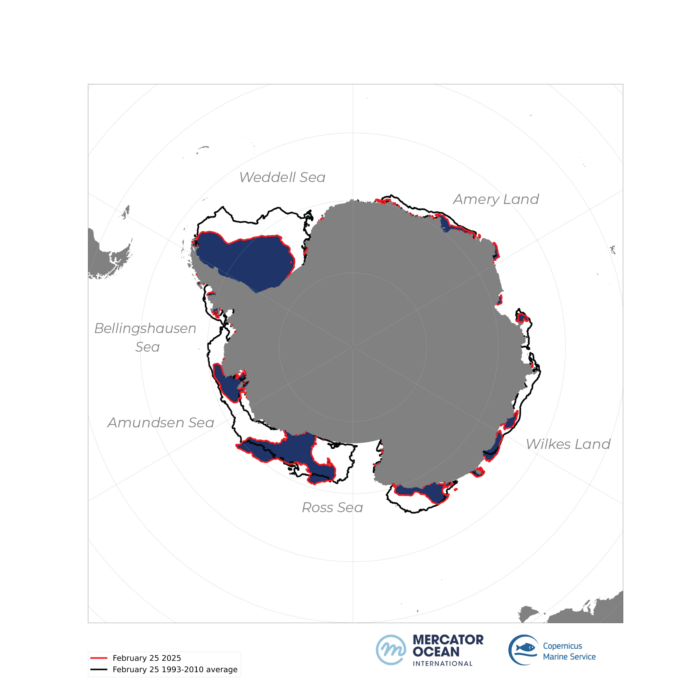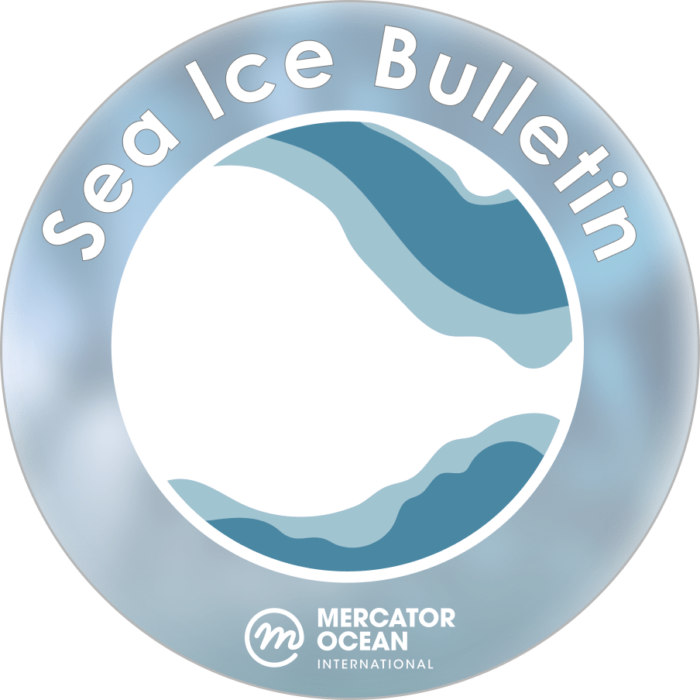
Key takeaways
Antarctic
- Sea Ice extent in the Southern Ocean has likely reached the annual minimum on the 25th of February at 1.87 million km2 – 8% less than the long-term average of1993-2010 (2.40 million km 2)
- In 2025, the Antarctic sea ice annual minimum extent is the 7th lowest on record, similarly to 2024.
- Near record low – sea ice volume reached 1.03 thousand km³ – a loss of 56% (1.36 thousand km³) compared to the long-term average between 1993-2010. This value is close to the 2022 and 2023 historical records.
Antarctic Sea Ice Minimum Extent
Antarctic sea ice extent remains low
The Antarctic Sea ice extent likely reached its minimum on 25 February 2025, at 1.87 million km². This is the seventh lowest extent (tied with 2024) in the last 32 years, after 2020, 2018, 2017, 2019,1993 and 1997. 2025 is the second consecutive year the Antarctic Sea ice has reached a minimum below 2.0 million square kilometers.
Most of the ice that has resisted the melting is detected in the Weddell Sea. Other areas also covered with sea ice are near the coasts of the Bellingshausen Sea, Wilkes Land and Amery Land, and offshore Amundsen and Ross Seas (figure 1). The five minimums set since 2017 are the five lowest extents in the 32-year period of satellite records.
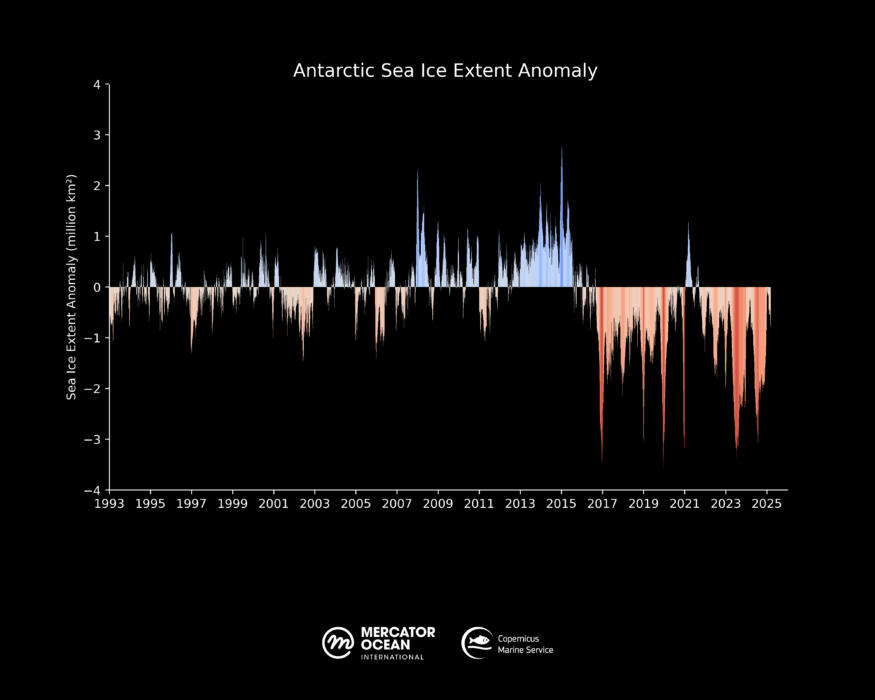
Figure 2. The 1993-2025 daily Antarctic Sea ice extent anomaly (using 1993-2010 average). Data: Global 1/12° forecasting and reanalysis systems. *
Antarctic Sea Ice Volume
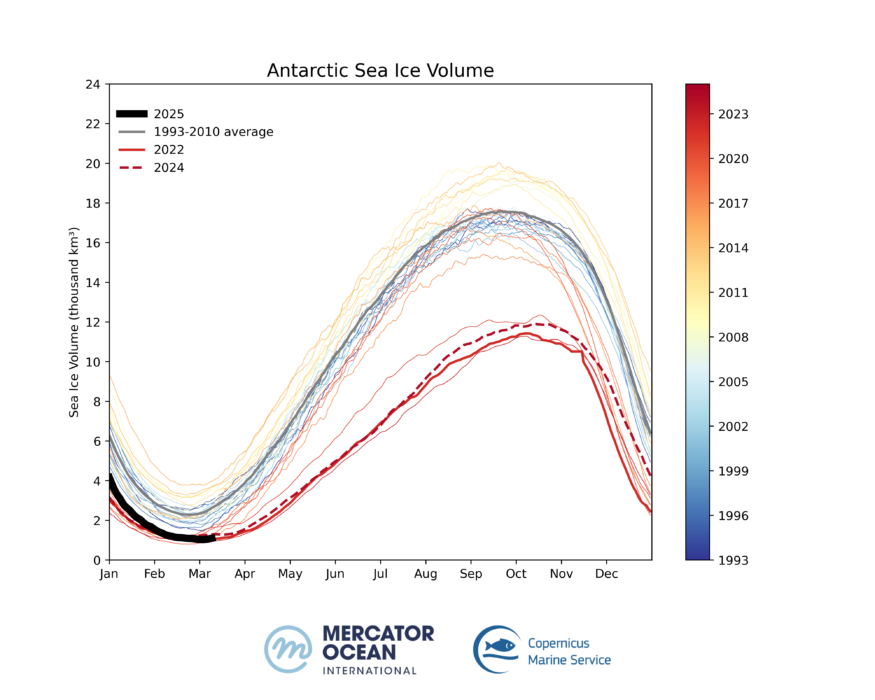
Antarctic sea ice volume at near record low
The Antarctic Sea ice volume reached near record low in 2025, with a minimum of 1.03 thousand km³ on 5 March 2025. In recent years, the minimum volume of sea ice in the region tends to last until the start of the northern hemisphere spring season in March (autumn season in the southern hemisphere).
This year’s loss of 56% in sea ice volume, compared to the long-term average for the same date (2.39 thousand km³) follows the footsteps of the last four exceptional years, which have shown very low volumes of sea ice.The recent series of low sea ice extent and volume since 2017 questions whether there is a significant decline over this short period of time.
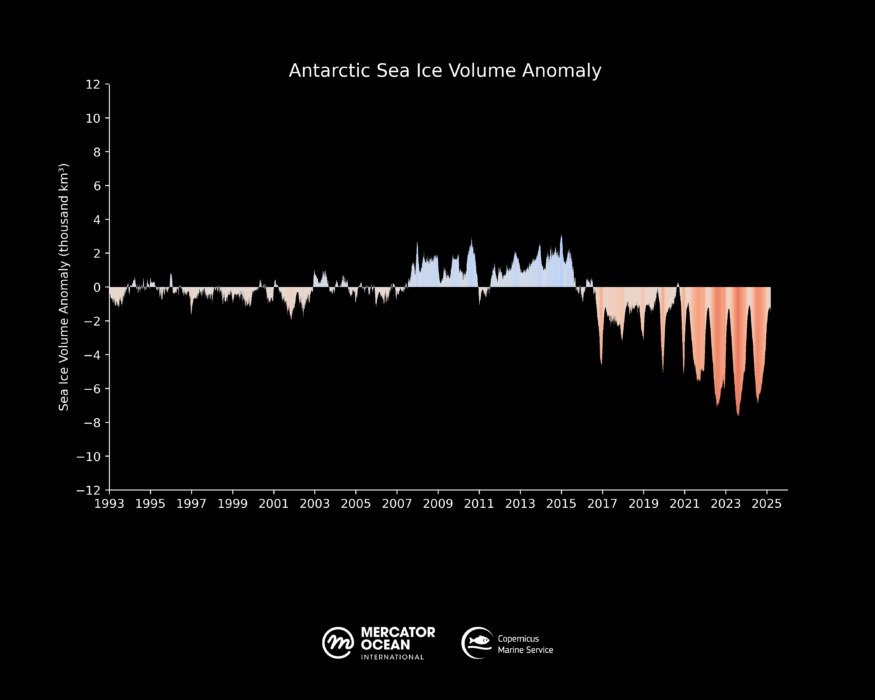
Definitions:
- Sea ice concentration – percentage of sea ice cover within the data grid cell.
- Sea ice extent – area covered by a significant amount of sea ice, at least 15% sea ice concentration (km²).
- Sea ice volume – derived from sea ice concentration and sea ice thickness integrated over a respective area (km ³).
Notes:
Products and data used:
- GLORYS12V1 global ocean eddy-resolving (1/12° horizontal resolution, 50 vertical levels) reanalysis covering the altimetry (1993 onward). https://doi.org/10.48670/moi-00021
- The Operational Mercator global ocean analysis and forecast system at 1/12 degree. https://doi.org/10.48670/moi-00016
Credits:
*Image citation: European Union, Copernicus Marine Service Data 2025 I © Mercator Ocean
All images in this article can be used freely and should be cited with the information above.
More on the topic:
Antarctic Sea Ice Reaches Lows Never Before Observed – Mercator Ocean (mercator-ocean.eu)
Arctic Sea Ice Bulletin March 2024

